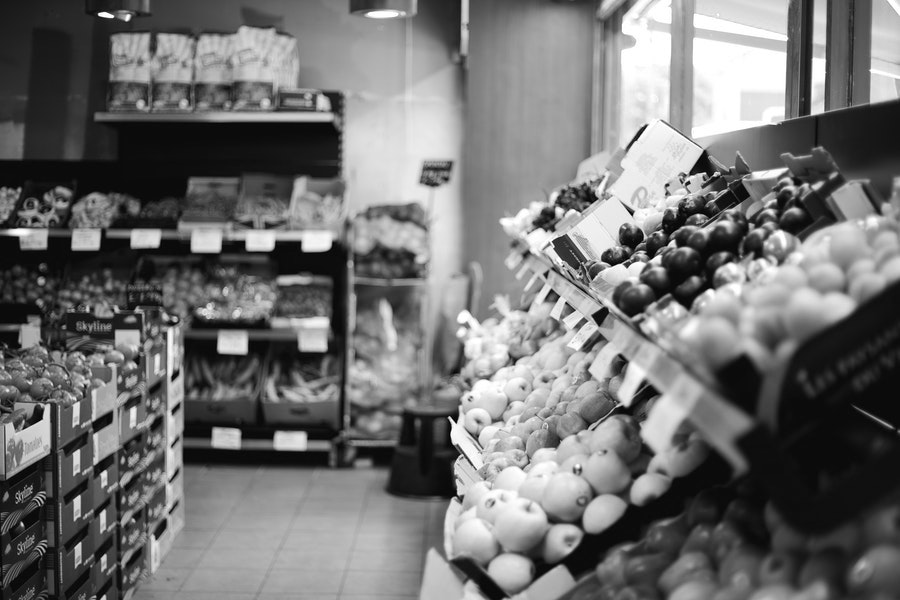Originally published April 2021.
Imagine a grocery store of the future, located in your average middle-class suburb, somewhere in America. On the way to picking up the children from soccer practice, a mother quickly realises she forgot to get the ingredients for that night’s chicken parmesan. Fortunately for Mom, just before making the turn to the soccer fields is her new favourite store, in the former Toys R Us that closed a few years ago.
She pulls into the parking lot, runs into the store, throws the chicken breasts, mozzarella, breadcrumbs, and marinara sauce into her cart, which is already bagged. A quick sprint over to grab a bottle of red wine and she’s out the door, without ever needing to stop at a checkout. Only five minutes pass before she’s back in her car and back to the soccer field with a couple of minutes to spare before practice lets out.
What sounds like the store of the future is actually the store of today, under the Amazon Fresh flag. Last week, Bloomberg broke the news that Amazon has already opened 11 of these stores to date, and has another 28 currently in the pipeline. Ranging in size from 25,000 to 45,000 sq. ft depending on the market, Amazon Fresh is carving out a unique niche in the grocery industry: larger than the cost‐sensitive players like Aldi and Trader Joe’s, yet smaller than their national counterparts like Albertsons, Kroger and Walmart.
Customers get a higher-end store experience on par with the mainline players along with prices typically seen at the discount players
Amazon is betting that its 126 million Prime members nationally will be eager to shop at its Fresh stores, based on a few key value propositions:
Cost competitiveness: The initial stores that have opened are featuring pricing in line with lower-cost competitors like Walmart, compared with mainline national grocers such as Albertsons, Kroger and Ahold. The Fresh expansion will surprise many in wake of the Amazon’s purchase of Whole Foods in 2017 for $13.4bn, but the move is really designed to have much broader appeal across the grocery shopper spectrum.
Hybrid shopping model: The stores will allow for online ordering with drive‐through pick-up, and will also support in-store order pick-up, or shopping done by customers. Further, the stores feature a robust prepared-food section, which has been a burgeoning segment of grocers over the last decade. The stores act as an additional distribution node, as well as an in‐person supermarket, which has proven to be very effective during the covid‐19 pandemic.
‘Just-walk-out’ technology: Developed in the Amazon Go concept stores, just-walk-out technology allows customers to walk into a store, pick out their purchases, and then walk out without ever needing to go to a cashier. The technology will take some time for Amazon to refine for the larger Fresh concept but appears to be viable in the years ahead.
Prime integration: Finally, Amazon is focusing the Fresh rollout in zip codes with the highest-density Prime membership populations. By doing so, it is targeting its best customers and can tailor the stocking of these stores to the rich set of information it already has about these customers’ shopping preferences.
To be clear, Amazon will need to vastly scale up the Fresh concept in the decade ahead to grab a meaningful slice of the $900bn US grocery market, but the signs are clear that Amazon sees a substantial opportunity in this space. With very experienced leadership at the helm and recently striking a major deal with the distributor Spartan Nash, there clearly appears to be a calculated and big bet on Amazon’s foray into the grocery business for the years ahead.
These stores could be a major driver for traffic to retail centres, offering a lifeline for further leasing activity, especially to small shop space
Looking at the broader impact on the retail real estate industry, a number of potential effects arise. For real estate developers and landlords alike, Fresh’s entry into the space will be embraced with open arms. As the retail world grapples with continuing fallout from store closures, especially in the junior and mid‐box space, a new player taking 25,000 sq. ft to 45,000 sq. ft is much welcomed news, particularly when the player has pristine credit and cash. Moreover, these stores could be a major driver for traffic to retail centres, offering a lifeline for further leasing activity, especially to small shop space, where landlords yield higher rent per square foot.
Dissecting the impact of the Fresh concept on other grocers is a more difficult proposition. The value‐focused component could pose perhaps the most substantial threat to Walmart’s hegemony in the low‐cost segment. If customers increasingly shift their non‐grocery purchases online, and fill their grocery component at Fresh stores, Walmart supercentres could see a serious impact on store traffic. Additionally, mainline grocers could be affected by the Fresh store, as customers get a higher-end store experience on par with the mainline players along with prices typically seen at the discount players.
Another key evolution to monitor is the impact of just-walk-out technology, which could create an arms race of sorts for imagery technology supporting the ability of customers to shop without needing to hit the checkout lane. Perhaps more than any other technological evolution in recent times, this tech appears to be a game-changer that could become a must‐have for shoppers. We foresee that other well-heeled competitors, such as Walmart, will combat this in time with their own rollout of similar technologies.
While there is a lot to monitor in the months and years ahead, Amazon’s major expansion of the Fresh concept is one of the most intriguing developments in the grocery business since Amazon’s first foray into it with Whole Foods, and one that we will continue to monitor closely.








